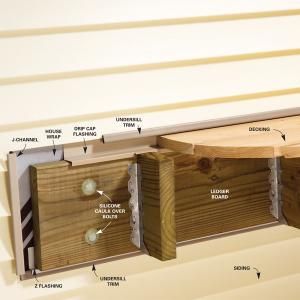Water Behind Siding
Accessory pieces install before the siding strips to prevent water from running behind the siding in these areas.
Water behind siding. Planks are 12 feet long x 5 16 inches thick and they come in a half dozen widths which means weather exposures can vary from 4 inches to 10 3 4 inches. There are many brands to choose from. It also performs the important function of protecting the interior walls from the outside elements. If the builder failed to install a weather barrier this sort of staining is more likely.
Water damage is risky business. In this video this old house general contractor tom silva shows how to prevent water from leaking in behind vinyl siding. Water passing over wood and other building materials but behind the vinyl siding can easily pick up pigments that stain the foundation wall outside. The siding made from portland cement sand cellulose and other additives is available with smooth or simulated wood grain finishes.
But siding is more than just a pretty face. This old house general contractor tom silva shows how to prevent water from leaking in behind vinyl siding. When siding is put back behind the gutter the lowest piece of flashing running down the pitch of the roof above must be fashioned to divert water into the gutter not behind the siding. At yanish we find water damage behind the siding of roughly 1 in 6 homes.
It easily hides beneath siding materials and often shows no obvious signs to untrained eyes. The damage can compromise a building s structural integrity. Check to be sure weep holes are open along bottom of window openings. Inspect the area above the leak including both indoors and out.
See below for a shopping list and tools subscr. There s no universal agreement on how effective these very shallow undulations are in allowing water to drain away. When water and snow create moisture behind it the siding no longer offers the protection necessary to keep your home safe. Wrinkled housewraps are manufactured with small corrugations in the surface a feature that is designed to turn the material into a drainage plane behind the siding.















































